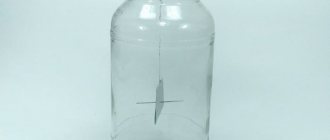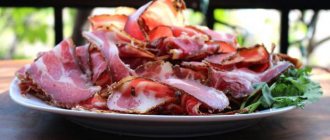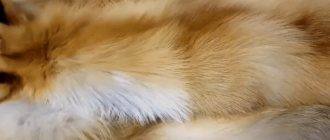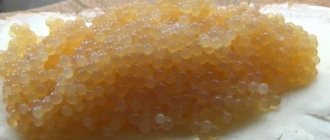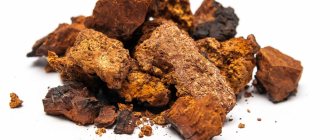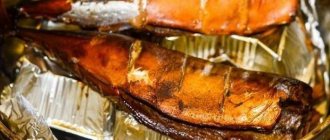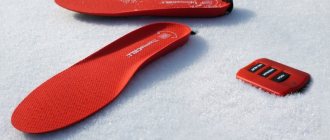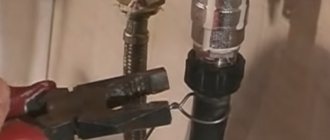How to make a bulletproof vest at home from cardboard
Euro-made products - only the best home-made products of the RuNet! How to make it yourself, master classes, photos, drawings, instructions, books, videos.
How to make a bulletproof vest with your own hands (photo, step by step)
Yes, you heard right. The author assembled a body armor practically at home and conducted successful tests on it using Saiga.
Read on for details.
So, due to the unstable situation in the country, it was decided to buy a bulletproof vest in case of all sorts of unrest. Having scoured the sites of our favorite RuNet, it became clear that my salary was not enough to buy even the lightest bulletproof vest (Kevlar). And then the thought occurred to me, why don’t I cut it down myself? Having scoured the Internet a bit, I found many articles about how and what bulletproof vests are made of. Everywhere it was said that body armor is made of Kevlar and titanium or aluminum and steel. But since I had neither Kevlar nor titanium, and it was not possible to buy, the choice fell on steel and aluminum.
To begin with, aluminum was purchased from somewhere unknown, stolen by homeless people. I bought it at a regular metal store. The thickness of the aluminum is approximately 1.5 mm. And along with it he bought steel.
The brand of aluminum, I don’t know its name. Walked in such sheets. Maybe it was taken from an old plane.
Next, it was necessary to buy a material that would absorb shock well, restore shape, and be very lightweight. After searching through stores and basements, I found this material. Polyester or something there. It is used as a lining for parquet. It is fragile, but at the same time impact-resistant.
Here's a closer look.
Sheets of aluminum were cut in half. It turned out to be one sheet, per one side of the body.
Next, it's time to put everything together. Some photos are missing, because... everything was done quickly. The dimensions of the “sandwich” were 49.5x31.5. Polyester, aluminum and steel were cut to this exact size.
In fact, the sheets were folded like this: polyester, aluminum, thinner gray polyester, steel, thinner gray polyester, aluminum and polyester again. There are no green sheets in this photo, I just glued them on top.
Then I fastened it all together with rivets. Bolts, screws, etc. fell off immediately. Well, tests were carried out on the same day. Saiga shot, distance 2 meters. The reservation has not been breached!!
It didn't go very well for him.
Further there will be more photos of the consequences of the shot:
I riveted it and looked. in order
Hole in the first aluminum sheet
The 2nd sheet of aluminum prevented the fragments from scattering and held the bullet
also for comparison
This sheet has been thrown away. The steel was taken twice as thick, and everything was new. The same aluminum and polyester. Unfortunately there is no photo left of the second option. The cover was made from Soviet burlap and ordinary fabric.
Well, here's the final version:
Well, the final one. Thanks to those who will treat the topic with understanding) There were no drawings, everything was just in my head)
Source
How to make a bulletproof vest with your own hands (photo, step by step)
How to make a bulletproof vest with your own hands (photo, step by step)
Yes, you heard right. The author assembled a body armor practically at home and conducted successful tests on it using Saiga.
Read on for details. So, due to the unstable situation in the country, it was decided to buy a bulletproof vest in case of all sorts of unrest. Having scoured the sites of our favorite RuNet, it became clear that my salary was not enough to buy even the lightest bulletproof vest (Kevlar). And then the thought occurred to me, why don’t I cut it down myself? Having scoured the Internet a bit, I found many articles about how and what bulletproof vests are made of. Everywhere it was said that body armor is made of Kevlar and titanium or aluminum and steel. But since I had neither Kevlar nor titanium, and it was not possible to buy, the choice fell on steel and aluminum.
To begin with, aluminum was purchased from somewhere unknown, stolen by homeless people. I bought it at a regular metal store. The thickness of the aluminum is approximately 1.5 mm. And along with it he bought steel.
The brand of aluminum, I don’t know its name. Walked in such sheets. Maybe they took it from an old plane...
Next, it was necessary to buy a material that would absorb shock well, restore shape, and be very lightweight. After searching through stores and basements, I found this material. Polyester or something... It is used as a lining for parquet. It is fragile, but at the same time impact-resistant.
Here's a closer look.
Sheets of aluminum were cut in half. It turned out to be one sheet, per one side of the body.
Next, it's time to put everything together. Some photos are missing, because... everything was done quickly. The dimensions of the “sandwich” were 49.5x31.5. Polyester, aluminum and steel were cut to this exact size. In fact, the sheets were folded like this: polyester, aluminum, thinner gray polyester, steel, thinner gray polyester, aluminum and polyester again. There are no green sheets in this photo, I just glued them on top.
Then I fastened it all together with rivets. Bolts, screws, etc. fell off immediately. Well, tests were carried out on the same day. Saiga shot, distance 2 meters. The reservation has not been breached!!
It didn't go very well for him.
Further there will be more photos of the consequences of the shot:
I riveted it and looked. in order
Hole in the first aluminum sheet
hit the steel bullet exit
The 2nd sheet of aluminum prevented the fragments from scattering and held the bullet
also for comparison
This sheet has been thrown away. The steel was taken twice as thick, and everything was new. The same aluminum and polyester. Unfortunately there is no photo left of the second option. The cover was made from Soviet burlap and ordinary fabric.
Well, here's the final version:
Well, the final one. Thanks to those who will treat the topic with understanding) There were no drawings, everything was just in my head)
DIY bulletproof vest at home
For the production of body armor, high-strength materials including ceramic or metal plates are used. Those who want to create a bulletproof vest with their own hands first need to decide on the specific material for its manufacture.
After reviewing a lot of information, the author concluded that, considering price, efficiency, availability and weight, titanium is the best choice.
This alloy is almost twice as light as steel, but weighs slightly more than aluminum. This point is very important when developing a body armor, since even a slight difference in weight will constantly affect the ease of use. Next, we need to consider the two most necessary characteristics of alloys in our case. The first is toughness, or KCU. The stability of the alloy against destruction depends on this indicator, that is, it shows under what load the alloy will not crumble. The second parameter is the ability of the alloy to deform and weld.
What can you make a bulletproof vest from at home?
Unfortunately, you don’t always have Kevlar, ceramics or metal on hand to make high-quality armor. It is in this case that many people wonder how to make a bulletproof vest with their own hands when the materials described above are not available?
Packing A4 paper will help protect you from Makarov pistol bullets. The bullet, entering freely, does not pierce the paper through. It is enough to sheathe an ordinary vest with layers of fabric (a kind of inserts) and secure well-pressed sheets of the above paper in them. You will get a good homemade body armor that can withstand shots of 9x18 caliber (PM).
To protect against attacks of greater power, you can use a wooden base covering the chest and stomach, and coins in denominations of 10 rubles. This combination will help protect against pistol bullets. Here you need to make 2 layers: the top one from a wooden base (it will stop the movement of the bullet) and the bottom one from tightly fitting coins (it will finally stop the bullet that gets stuck between the wood and the coins). For better protection with coins, it is better to sheathe it in 2 or 3 layers. The vest will be reliable, but the person will experience very sharp pain when hit by a bullet, but will only get away with shock and bruises.
The combination of three layers of coins, steel plates and reinforced threads will help avoid injury even from the Saiga carbine. This option would be an ideal body armor.
However, professionals still do not recommend making body armor without special training. If a person's life is truly in danger, it is better to resort to factory-made armored clothing. Homemade armor, if it is not made in compliance with all the rules and recommendations (which happens quite often due to the incompetence of the master), will not be able to protect against injury in the event of a real threat.
Examples of alloys and their characteristics
Characteristics of armor steel grade 44, which is used for the production of most body armor, as well as armored vehicles: KCU - 400–500 kJ/m2. This means that a 1x1 cm square plate with a thickness of 0.7 cm is guaranteed to withstand a blow delivered with the specified force.
A 5.56 NATO caliber bullet at exit from the barrel has an energy of 1767 kJ/m2. This means that the plate must have a thickness of (1767/450) x 0.7 = 2.75 cm. That is, in order to withstand a point-blank shot from such a weapon, you need to wear a body armor with a plate 3 cm thick.
As for titanium, you can consider two alloy options - VT1-0 and VT23. KCU indicator: VT1-0 - 500–1000 (average value taken - 750), VT23 - approximately 1100.
If you count, it turns out: VT1-0 - (1767/750) x 0.7 = 1.65 cm. VT23 - (1767/1100) x 0.7 = 1.13 cm. As you can see, the result is significantly different from the indicator steel 44.
Step-by-step description of making a bulletproof vest
1
.
First you need to cut the fabric according to your measurements. 2
.
To secure the body armor, use Velcro. 3
.
Then, in the case of steel, you need to heat the alloy and bend the edges. 4
. We place the plates in the case. It should be tight, but the plates should not be tensioned so as not to cut the fabric.
Source
How to make a bulletproof vest at home from cardboard
This armored vehicle is designed for men of average build. On heroes it looks somewhat comical. Those. For very large men, the dimensions of all parts, including the steel liner, must be adjusted individually.
In the first picture we have the front part of the body armor (“belly”), the soft part of the Velcro fastener (loop), stitches for sewing on pockets, straps with a metal frame for fastening on the shoulders. On the reverse side there is a lining part. If I drew it, you would only see a pocket slit, closed with Velcro.
The second picture shows the back. You can see the pocket sewing seams, Velcro fasteners (the hard part is “hooks”), which we simply nicknamed “ears.” Straps for fastening on the shoulders (Velcro hooks at the bottom, Velcro loops at the top) and hard Velcro straps just below the shoulder seam for better fixation straps The lining side is similar to the shelf.
To fit comfortably, according to my estimates, you need a piece of fabric two meters long with a width of one and a half meters. Material: rubberized fabric, like for backpacks.
As many details are cut out as are drawn on the layout. Seam allowances = 0.7 cm are quite enough (do not forget to adhere to exactly the allowances with which you cut out the parts when sewing). The allowance for the Velcro fastener in the lining parts of the shelf and back is 1 cm. The only variations that are allowed are the method of cutting out the straps for the shelves (detail 1.5.) - they can be cut from one piece with a fold or from two.
I. Cut Velcro (6 pieces of the soft part of the Velcro, 5 cm wide, 15 cm long), 3 Velcro on each side. We put 3 cm down and to the side from the top point of the side cut, and begin to adjust the Velcro. First each, then all of them in a diagonal pattern - criss-cross. I guessed in such a way as to lay the second line, moving from one diagonal to another, from the side of the stomach - that area will be more often subject to “tear” tests when unbuttoning.
II. Pocket 1) Adjust the gain. 2) We bend the short side by 0.7-1 cm - this will be the entrance to the pocket. 3) Fold the pocket face up so that the entrance to the pocket is 4 cm below the raw edge, stitch along the edges of the pocket by 0.5-0.7 cm, remembering to fasten in strategically important places! 4) We attach the pocket with the wrong side of the shelf, figure out how to sew it so that the bottom of the pocket is about a centimeter higher than the bottom of the shelf. We make markings on the shelf where the pocket is sewn on. We mark the pocket (approx. 1 cm from the raw edge) on the front side of the longer part of the pocket. We roll the pocket into a tube with the entrance of the pocket down so that it fits under the sleeve of the machine (the “tube” of the pocket and the shoulder sections will be on one side), draw up the pocket sewing lines on the pocket and on the shelf, and stitch it. We unfold the pocket with the entrance to the pocket facing up, and add a finishing stitch about 0.7-1 cm.
III. Lining side of the shelf 1) We add 1 cm to the hem allowance for the Velcro fastener. 2) We adjust the Velcro with a zigzag seam. On the side of the armholes, we make indents of about 1 cm so that the Velcro does not interfere with final assembly. There is Velcro hooks on the yoke, attached from the wrong side (looking down). On the main part there are Velcro loops, attached from the front side (looking up). We fasten the Velcro. The lining is ready.
IV. The straps can be sewn from one long piece (7 by 46 plus allowances), from one wide piece (14 by 23 plus allowances), or from two (7 by 23 plus allowances) - the main thing is that in the end you get two straps of size 7 by 23 cm. 1) We sew it on three sides, cut off the allowances at the corners, turn it inside out, and add a finishing stitch. 2) We melt two pieces of sling (18 cm) along the edges, bend them in half, put a steel frame into the fold, adjust the sling onto the strap (we combine the melted edges of the sling with the raw cut of the strap), first under the frame and along the edges, then crosswise (under I, like a hereditary paranoid, went through the framework three times).
V. Assembling the shelf (this is not shown in the pictures). 1) First I sewed the straps. We apply the straps to the shoulder sections of the front part of the shelf (face to face) and sew them at 0.7. 2) Then we fold both parts of the shelf (front and lining) face to face, for convenience, you can pin them together at strategic points, and we sheath them by 0.7 cm on all sides. When walking over the Velcro fastener, it is advisable to make fastenings. 3) Cut off the excess in the corners, notch in the places of bends. We turn it inside out through the Velcro fastener and straighten the corners. 4) We lay a finishing stitch on all sides. Attention: in particularly “thick” places (where there are straps, for example), we slow down the machine so as not to break the needle.
DIY armor at home. What types of body armor are there? DIY bulletproof vest
Personal safety is always a key concern, and protective equipment is not always available. Today we will tell you how to make a durable bulletproof vest at home yourself.
To make a bulletproof vest with your own hands you will need the following:
Case; — plates made of armored material.
To make your own case you need the following materials:
1.
Durable fabric. Of course, a khaki-colored fabric would be better; it’s ideal for camouflage.
2.
Tape tape.
3.
Scotch.
Sometimes the case is made with additional pockets, which is quite practical. Of course, the main thing is that the case is comfortable for everyday use and durable.
How to make a bulletproof vest at home?
For armor plates use:
1.
Durable metal: titanium, steel and other durable alloys.
2.
Ceramics: boron carbide, aluminum oxide, silicon carbide, etc. Based on practicality issues, the best option is steel and monolithic polycarbonate.
You can purchase and cut metal at metal depots; they are affordable for the population. Sometimes several layers of steel are used to increase protection. Between them is a layer of insulation or regular foam to absorb the shock.
1.
Cut out the fabric using your measurements.
2
. For ease of wearing, use Velcro.
3.
Heat the steel and bend the edges.
4
.Place the plates in the case. Remember it must be tight, and without strong tension, so that the plates do not cut it. If necessary, use adhesive double-sided tape.
Using these simple tips, you can easily make a bulletproof vest at home. Take care of yourself!
Video. How to make a bulletproof vest?
Good day, brain friends
!
Today I’ll tell you how to create
a lightweight and comfortable armor suit from ordinary sheet foam.
Materials:
- A sharp knife (regular carpenter's knife or for cutting foam plastic, maybe even a jigsaw)
- Computer and printer
- Glue gun (I like one with power setting)
- Paper, pen, ruler, etc.
- Liquid rubber
- Aerosol paint
- Dremel and accessories
- Foam sheets of various textures
Step 1: Create a Model File
Using an excellent program for creating paper models, we create 3D and 2D models of our future costume and print the resulting templates. I think you will find this link useful. By the way, if you are not sure that you can understand the program settings, then there is a lot of useful literature, and of course brainforums
.
Step 2: Cutting and Layouts
From the printed sheets, gradually, not all at once, we cut out the templates and glue together the details of the layouts. Not all at once because you can get confused about where is what, where is what detail, so it’s better to do it in order.
When 3D paper craft designs
ready to copy them from foam. We take sheet foam and, using a sharp knife, cut out costume elements from it that are identical to the paper templates. On the paper layouts themselves there are points that can be transferred to the foam, yes, we just measure the dimensions on the layout and put them on the foam. This produces fairly accurate parts, saving time and, of course, foam.
Step 3: Finishing small details
When all the details of the costume were made in foam, it was time to modify these parts, namely, cut out various grooves and grooves on them. We mark on the parts the places for cutting grooves, take a hot cutting knife or a carpenter's knife and, in fact, cut out and select these grooves and grooves. A hot cutting knife produces straight lines well, a carpenter's knife produces corners, and it's best to remove material from grooves with a Dremel, but you need to rely on your capabilities and brainpower.
. The main thing is to detail the large parts of the costume and make them more realistic.
Step 4: Gluing the Parts
Now we start gluing the parts into more massive elements of the costume. I think after all the manipulations you already know what and where to glue without looking at the computer. So, first we try the parts together, if they don’t fit in thickness, then we trim them, and then glue them together. That is, we apply glue to the smaller part and press it to the larger one in its proper place, squeeze it a little and hold it so that the glue can set. We do this with all parts that require gluing, while trying not to let the glue be visible on the homemade product.
.
Step 5: Finishing
At the moment, the suit corresponds to the model created on the computer, but it can be improved a little more. On the Internet we find pictures from a movie, from a game, etc. and study them, notice any interesting details, “damage”, accessories, “chips” and transfer them to your armor suit. To do this, use thin sheet material, wires, LEDs, etc. You can drill artistic holes with a Dremel and add them to your homemade project.
bolts, nylon straps can be used to connect the parts of the suit, so they will look better and hold on more firmly.
Show your imagination
and ingenuity!
Step 6: Coloring
Before painting the suit, you need to cover the parts with liquid rubber from a spray can, since if this is not done, the paint will be absorbed by the foam, and the surface will be rough, matte, and dull. Therefore, first we spray the rubber, let it dry, and only then paint the armor suit in the selected colors. To improve the quality of painting, do not forget to use masking tape, and if you have it, then an airbrush.
Step 7: The armor is ready!
Homemade
done, we check it, if necessary, we modify it somewhere.
If desired, we install fans, lighting, decals, etc. The main thing is not to be afraid, and through trial and error, create your own unique brain-based creations
!
Of course, to participate in much more serious and dangerous events (combat operations, participation in special operations, etc.), it is better not to use homemade body armor, giving preference to products manufactured by highly qualified specialists. At the same time, there is no point in shelling out for such expensive specialized clothing if we are talking about sports equipment, because there are many simple and affordable ways to make a bulletproof vest with your own hands. At the same time, it should be noted that many people are prejudiced and even somewhat skeptical about this idea, believing that only with the help of special high-tech equipment can they actually make a bulletproof vest with their own hands. Few people know how to do it without such equipment, although in fact it is more than possible.
As for the necessary materials, for semi-professional equipment you can use only the most accessible of them, because to make a full-fledged body armor, in addition to aluminum and thick-walled stainless steel, you also need components such as titanium and Kevlar, which are not so easy to obtain. In practice, you can easily limit yourself to aluminum and steel alone, provided that the latter material is sufficiently rigid and thick in cross section, otherwise there is simply no way to talk about the high reliability of the finished product. In addition, it should be taken into account that in order to increase the level of endurance, as well as such an important quality in this regard as wear resistance, it is recommended to fill the body armor according to the famous “sandwich” pattern. That is, we are talking about a kind of interlayering, which involves alternating different materials, including more plastic polystyrene.
The main purpose of the last element is to contain and absorb shock, as well as quickly restore shape with low weight and fairly high fragility. Typically, polystyrene is used as a substrate for laminate or parquet floors, but it can cope with the task quite well; in any case, it is better to choose it than ordinary polystyrene, as is customary among many craftsmen. After all the necessary materials and elements have been collected, it is necessary to cut out rectangular sheets of the same size from them, which directly depends on the dimensions of the person for whom the bulletproof vest is actually being made. In any case, you should start cutting with the most difficult materials, because it is much easier to fit porous plastic polystyrene to steel or aluminum than vice versa.
The easiest way to cut polystyrene is with a sharp stationery knife, while aluminum and steel, after cutting with a grinder, also require careful sanding and grinding of all edge cuts. In order not to overload the structure, making it too bulky, it is recommended to use two polystyrene - thicker and thinner. It is recommended to start forming a protective layer with polystyrene (thick sheet), after which it is covered with aluminum, thin polystyrene, again with aluminum and again with thick polystyrene. When the sandwich is finally formed, all its layers must be firmly fastened together; ideally, for these purposes, use two-component polymer glue along the contour of the workpiece and through-type fastening bolts. After the workpiece is completely ready, it must be tested no further than from a two-meter distance.
If the protection fully meets all the requirements, then you can safely begin sewing a cover for a bulletproof vest, which even the most primitive sewing machine can handle. It is usually a reversible vest that is pulled over the head and secured at the sides with adjustable Velcro. To increase reliability and additional rigidity of the structure, two patch pockets can be sewn on top of the body armor on both sides. This measure is necessary in order to place a thin steel sheet in each of them, the dimensions of which will fully correspond to the size of the pockets. Alternatively, these plates can be layered with a thin layer of foam, because in this way it will be possible to maintain the lightness of the structure.
The tense situation in our country makes many people think about protective equipment, I mean body armor. Here I’ll tell you about my experience in obtaining a bulletproof vest of average quality, its protection class is approximately third.
It all starts with the case; a cheap but quite suitable case made of thick cordura of medium quality will cost about 265 hryvnia. I just bought a case similar to the “Pantsir 3-95M” TEMP-3000, but naturally not a “damper”.
Let's say a steel plate stops a bullet, an anti-ricochet cushion will prevent fragments from scattering in all directions. But there is another very unpleasant phenomenon: the blocking effect of a bullet. That is, even through the plate you will feel a blow like from Vitali Klitschko, the sensations are indescribable and serious injuries are guaranteed. A good damper can be ordinary isolon, which is sold in hardware stores. In the corsair body armor, which our organization handed over to the military, a double layer of isolon with a total thickness of 8 mm was attached to the armor plate. A plate with a damper is easily inserted into the branded body armor case. The inside of branded body armor has a lining, which allows you to wear the body armor quite comfortably, as far as is generally possible for such things.
But what should we do as artisans? We can wear a bulletproof vest over a sweater, over an insulated pea coat, or over a padded jacket. You can buy a cotton sleeveless vest at a military store. Or you can sew a padded jacket yourself, especially if you have some old cotton wool lying around. And there is this unloading case in which you can pack something, a quilted jacket, for example.
So, due to the unstable situation in the country, it was decided to buy a bulletproof vest in case of all sorts of unrest. Having scoured the sites of our favorite RuNet, it became clear that my salary was not enough to buy even the lightest bulletproof vest (Kevlar). And then the thought occurred to me, why don’t I cut it down myself? Having scoured the Internet a bit, I found many articles about how and what bulletproof vests are made of. Everywhere it was said that body armor is made of Kevlar and titanium or aluminum and steel. But since I had neither Kevlar nor titanium, and it was not possible to buy, the choice fell on steel and aluminum.
To begin with, aluminum was purchased from somewhere unknown, stolen by homeless people. I bought it at a regular metal store. The thickness of the aluminum is approximately 1.5 mm. And along with it he bought steel.
The brand of aluminum, I don’t know its name. Walked in such sheets. Maybe they took it from an old plane...
Next, it was necessary to buy a material that would absorb shock well, restore shape, and be very lightweight. After searching through stores and basements, I found this material. Polyester or something... It is used as a lining for parquet. It is fragile, but at the same time impact-resistant.
Here's a closer look.
Sheets of aluminum were cut in half. It turned out to be one sheet, per one side of the body.
In fact, the sheets were folded like this: polyester, aluminum, thinner gray polyester, steel, thinner gray polyester, aluminum and polyester again. There are no green sheets in this photo, I just glued them on top.
I riveted it and looked. in order
Hole in the first aluminum sheet
hit the steel
Bullet exit
The 2nd sheet of aluminum prevented the fragments from scattering and held the bullet
also for comparison
This sheet has been thrown away. The steel was taken twice as thick, and everything was new. The same aluminum and polyester. Unfortunately there is no photo left of the second option. The cover was made from Soviet burlap and ordinary fabric.
Well, here's the final version:
Well, the final one. Thanks to those who will treat the topic with understanding) There were no drawings, everything was just in my head)
We also recommend
- Eastern European theater of operations of the Second World War Chronology of events
- New Year's music games and competitions
- How to draw a bird with a pencil step by step for children?
- South Pole land of queen fashion
- Draw a secretary bird with a pencil step by step
Paper bulletproof vest
#1 foreverman
#2 CiDRoN
Constructivism on forum.ee
- Admin
- 8,179 messages
- From: Tallinn
#3 Komunyaka
Candidate from f.ee
- From: From the past
foreverman, First of all, what kind of Kalash are we talking about? And what kind of ammunition? A rifle armor-piercing cartridge (7.62x54R) penetrates brickwork, a larger caliber (12.7x108) penetrates the armor of armored personnel carriers. If you're lucky of course. Such a bullet tears a person into two parts, and the upper half usually flies 5 meters. So think about how many meters of paper you need. In general, study international protection classes so that you have an idea of the armor penetration of various ammunition.
I saw a bulletproof vest made from paper
The eaglets' wings were clipped. Glory and honor are humiliated. It is no longer courage that is held in high esteem, but sweet, sticky flattery.
#4 Vyvrivglaz
- From: Estonia, Tallinn
#5 Stormborn
#6 PitiPit
I didn’t watch the series, but I assume they shot at him with something like .22lr. This cartridge will not penetrate my jacket.
You understand a lot. ))
The caliber of the bullet is for lethality and penetration. Plus, you need to take into account the charging power itself.
A large caliber may not penetrate your body armor, but it can give you a concussion (in general, it will take the enemy out of combat formation). A small caliber can penetrate, go right through, but will not kill, for example.
#7 foreverman
Message modified: foreverman
(February 19, 2010 - 21:28)
#8 Vyvrivglaz
- From: Estonia, Tallinn
Vyrviglaz, For your information, I am currently writing a doctoral dissertation. Different areas require different specialists. but the plane still won’t take off..
#9 Komunyaka
Candidate from f.ee
- From: From the past
The caliber of the bullet is for lethality and penetration. Plus, you need to take into account the charging power itself.
A large caliber may not penetrate your body armor, but it can give you a concussion (in general, it will take the enemy out of combat formation). A small caliber can penetrate, go right through, but will not kill, for example.
Message modified: Komunyaka
(February 19, 2010 - 22:01)
The eaglets' wings were clipped. Glory and honor are humiliated. It is no longer courage that is held in high esteem, but sweet, sticky flattery.
#10 PitiPit
This is the amount of energy transmitted by a bullet per 1 cm of the wound channel.
What is it? How much energy does a bullet need to move 1 cm in the body?
Communy, listen, what is your jacket made of? I’ll think about whether you should continue, that is, whether it will be interesting for me to listen to you further =)
#11 Komunyaka
Candidate from f.ee
- From: From the past
Komunyak, they shot from a crossbow as far as I remember (or am I confusing it with something?). And the role of the so-called The body armor was carried out by packing paper for the printer.
The eaglets' wings were clipped. Glory and honor are humiliated. It is no longer courage that is held in high esteem, but sweet, sticky flattery.
#12 Grozny
'/> '" data-cid=»2845995″ data-time=»1266604322″ data-date=»February 19, 2010 — 20:32 «>
Komunyak, they shot from a crossbow as far as I remember (or am I confusing it with something?). And the role of the so-called The body armor was carried out by packing paper for the printer.
#13 Komunyaka
Candidate from f.ee
- From: From the past
What is it? How much energy does a bullet need to move 1 cm in the body?
listen, what is your jacket made of?
The eaglets' wings were clipped. Glory and honor are humiliated. It is no longer courage that is held in high esteem, but sweet, sticky flattery.
